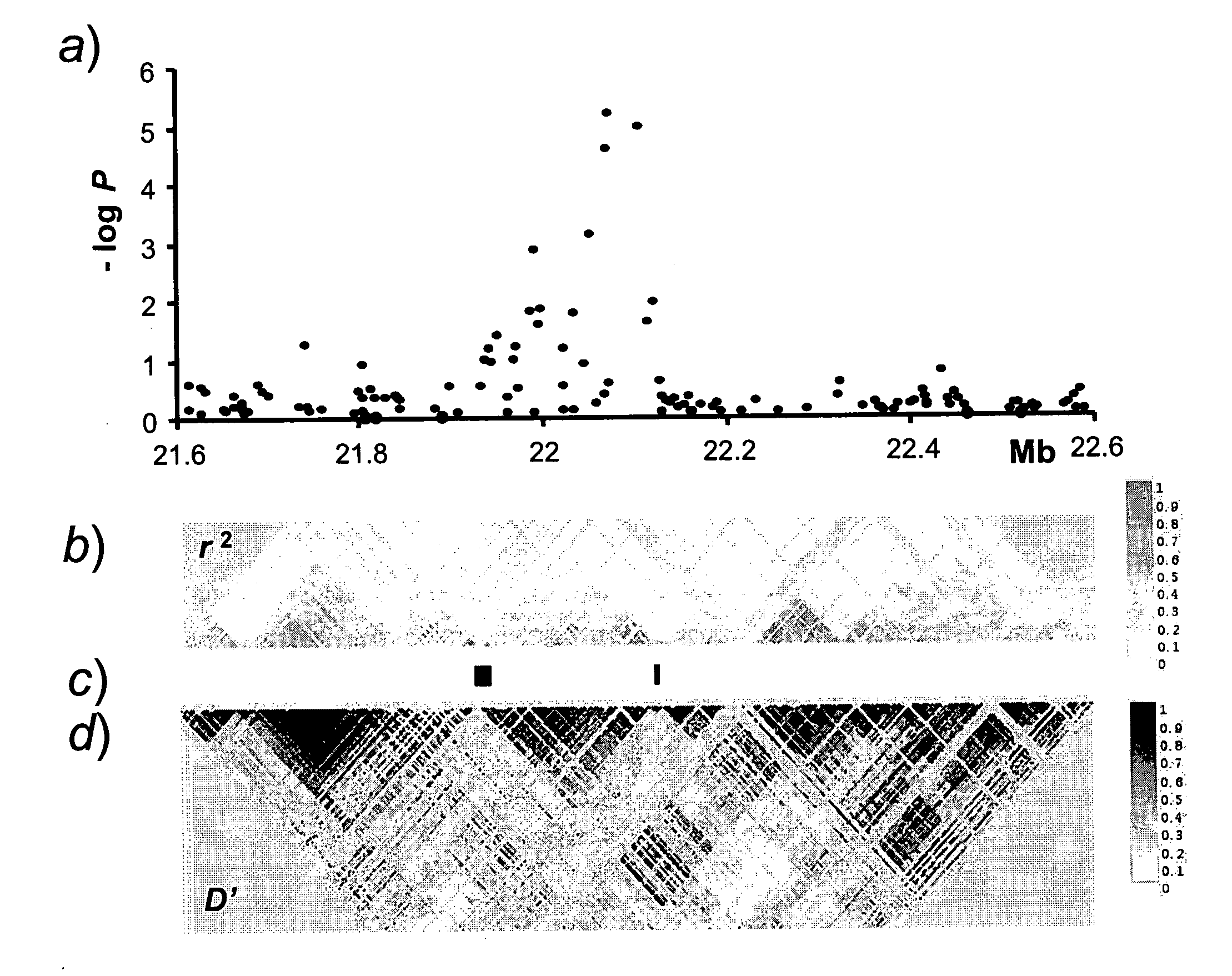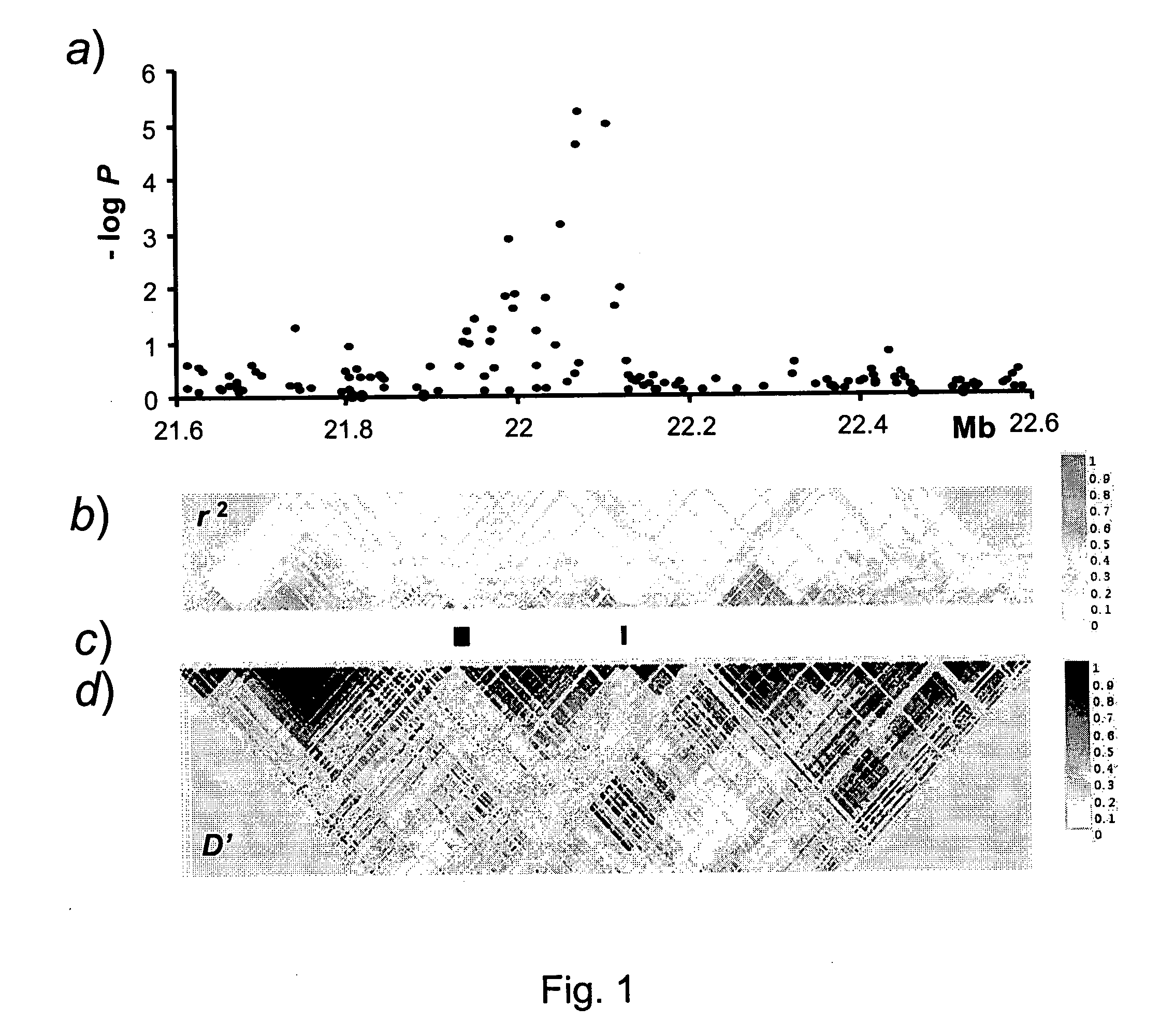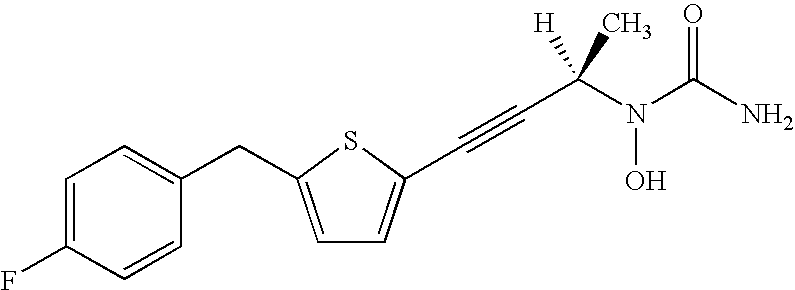Genetic susceptibility variants associated with cardiovascular disease
a genetic susceptibility variant and cardiovascular disease technology, applied in cardiovascular disorders, drug compositions, instruments, etc., can solve the problems of compromising the blood flow to the heart, coronary artery lumen can become gradually narrowed, and high morbidity and mortality, and achieve the effect of increasing susceptibility and reducing susceptibility
- Summary
- Abstract
- Description
- Claims
- Application Information
AI Technical Summary
Benefits of technology
Problems solved by technology
Method used
Image
Examples
example 1
Genome-Wide Association Study
[0290]We successfully genotyped 1570 Icelandic myocardial infarction patients and 7088 population control individuals without known history of coronary artery disease (Cohort A) using the Illumina 330K chip. We performed a genome-wide scan for association to MI, testing individually each of the 309,091 SNPs that was successfully genotyped. Three markers (rs10116277, rs1333040, rs2383207), all located in a single LD block (denoted herein as LD block C09) on chromosome 9p show strong association to MI (see FIG. 1 and Table 1a). All three markers are strongly correlated (Table 2) and the population frequency of the at-risk variants range from 42% to 49%, and the corresponding relative risk is approximately 1.2. The risk alleles of the same three markers also showed a significant correlation to lower age at onset within the MI patient—individuals carrying the at-risk variant are at significant risk of developing MI at a younger age than individuals who are n...
example 2
A Common Variant on Chromosome 9p21 Affects the Risk of Myocardial Infarction
[0299]Coronary artery disease (CAD), including acute myocardial infarction (MI), is the leading cause of death worldwide (Thom, T., et al., Circulation 113:e85 (2006)). Identification of the underlying genetic architecture of heart disease may provide improved risk assessment and better measures for prevention and treatment.
[0300]To this end we conducted a genome-wide association study on Icelandic patients with MI, using the Illumina Hap300 chip. After quality filtering, 305,953 SNPs were tested for association to MI in a sample of 1607 cases, with age at onset before 70 in males and 75 in females, and 6728 controls without a history of CAD (Helgadottir, A., et al., Science 316:1491 (2007)). The results were adjusted for relatedness between individuals and potential population stratification using a method of genomic control (3). Although none of the SNPs were significant after adjusting for the number of ...
example 3
Genotyping of Polymorphic Markers Identified Through Sequencing
[0308]Sequencing of the exons of CDKN2A and CDKN2B genes, the exon-intron junctions and potential regulatory regions using the primers as indicated in Table 25 resulted in the identification of a number of SNPs, as shown in Table 26. Flanking sequences for three of those SNPs that were not found in public databases are indicated in Table 31. As it is possible that SNP markers or other polymorphisms in LD with the markers found to be associating to MI in this region of chromosome 9 show association with a higher risk, we genotyped these additional markers by sequencing, as indicated in Table 28. Several of the markers show association to MI with RR values as high as 1.7-1.8, in particular markers SG09S291 and rs2069416.
PUM
| Property | Measurement | Unit |
|---|---|---|
| Length | aaaaa | aaaaa |
| Size | aaaaa | aaaaa |
| Ratio | aaaaa | aaaaa |
Abstract
Description
Claims
Application Information
 Login to View More
Login to View More - R&D
- Intellectual Property
- Life Sciences
- Materials
- Tech Scout
- Unparalleled Data Quality
- Higher Quality Content
- 60% Fewer Hallucinations
Browse by: Latest US Patents, China's latest patents, Technical Efficacy Thesaurus, Application Domain, Technology Topic, Popular Technical Reports.
© 2025 PatSnap. All rights reserved.Legal|Privacy policy|Modern Slavery Act Transparency Statement|Sitemap|About US| Contact US: help@patsnap.com



